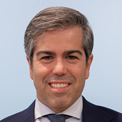In recent weeks we have shared various celebrations with family, friends and coleagues in which feelings of joy and enthusiasm always stand out. Also on these dates we review how the last twelve months have elapsed, and we tend to make resolutions about what we want to improve, looking for new challenges and projects to start the year with motivation and renewed energy.
Therefore, I would like to start the year by proposing a challenge. What asset do you think obtained the profitability that you can see in the following graph?
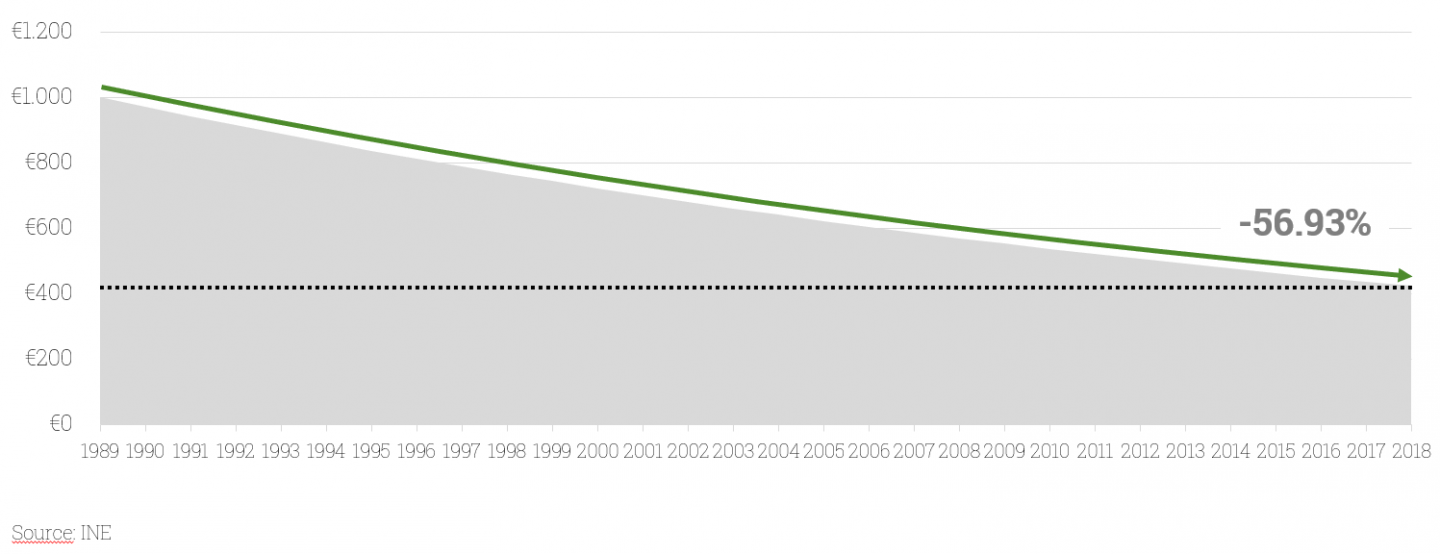
This investment has fallen by 57% in the last 30 years. If we had invested 1,000 euros (pesetas at the time) in 1989, we would now have about 430 euros. Most probably, the first thing that comes to mind is an investment in a risky asset or simply shares in a listed company. Well, it is an asset in which we all invest, whether we want to or not: inflation, in this case the CPI in Spain since 1989, which has averaged 2.86% per year.
The challenge I’m proposing is not to allow your savings to suffer this loss of purchasing power. Put your money to work for a better future. A simple example of what it means to do it:
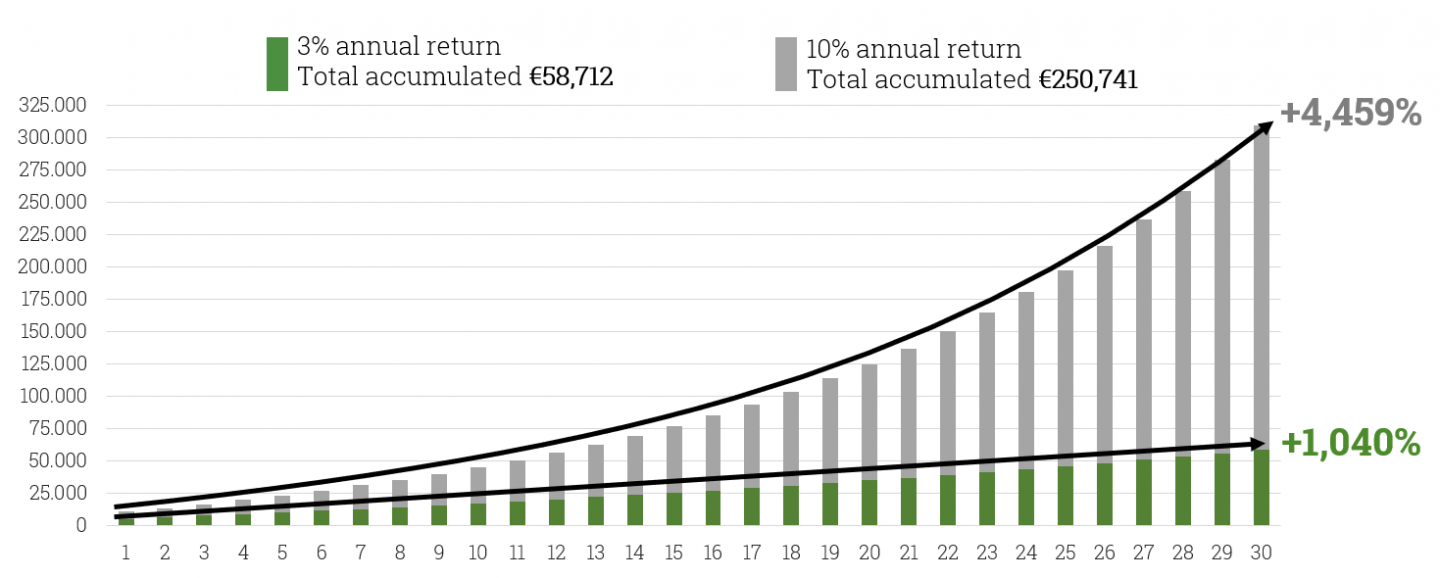
In the previous chart, we start with an initial investment of 5,000 euros for two types of 30-year- old assets: one that obtains a return of 3% per year, which could be, for example, an investment in fixed income, and another that obtains 10% per year, such as variable income. We also assume that every year we invest 1,000 euros of the savings that we generate with the income we obtain.
Well, as you can see, not only we do not lose purchasing power because of inflation, but thanks to compound interest we generate very attractive capitals at 30 years. In the case of the best case, we will obtain more than 250,000 euros, having invested 34,000 (initial 5,000 euros plus 29 years investing €1,000 each year), which will undoubtedly help us to have a very financially comfortable retirement.
Therefore, as I said before, it takes a lot of work and effort for us to generate savings from our wages and income, so, to put it colloquially, it’s up to our savings to work for us.
Cobas Asset Management started out three years ago, first with the Cobas Selección F.I. fund, which began to invest in equities in January 2017, and then, at the beginning of February 2017, the management company was established. We started out with the ambition of making knowledge available to savers as well as performing rigorously in investment management, with the objective of achieving satisfactory long-term returns.
The planting began in 2017. In this case the seeds are the shares of the companies we invest in. We expect this to be a productive and profitable crop. We cultivate a product that, when taken care of and worked by following a rigorous method and applying knowledge, inexorably reaps fruits in the long term. Some of the time we do not see those fruits, it may even seem that the harvest will not be successful, but they bloom all of a sudden.
We could find a simile in olive trees. When we plant a young olive tree, the olives that it produces in the short term are nothing like the ones it generates over the years. Not only the fruit improves in quantity and quality, but also the solidity and robustness of the olive tree. The same goes for investment funds with a long-term value investment approach. Over the years we will reap the rewards in the form of profitability and also the investment process and the investment portfolio will be more established, more robust and of higher quality.
In these three years our funds have accumulated the following returns:
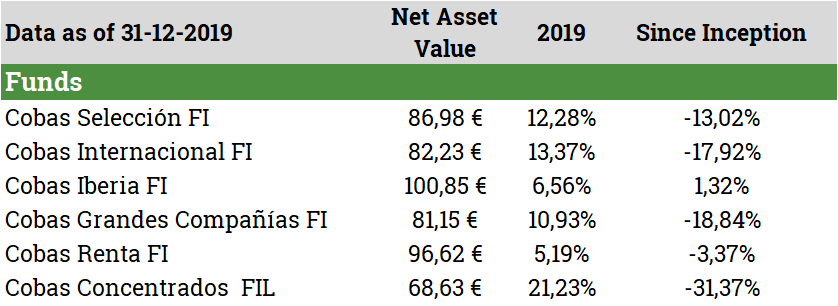
As you can see in 2019 our international portfolio obtained a return of 13.4% and the Iberian portfolio, 6.5%. From the beginning our funds accumulate negative returns, except for the Iberian fund that is practically at the same starting values.
In our last quarterly letter, corresponding to the third quarter of 2019, we reviewed the returns of the international portfolio obtained by Francisco García Parames and his team in all periods of 3, 5 and 10 years. You can see the study in more detail in the quarterly comment.
Personally I would draw two conclusions:
The first would be that about 20% of all 3-year periods the profitability was negative, approximately -15%. In these first three years of Cobas AM we are in a similar situation, since as I said before, at the end of 2019, our investment fund Cobas Selection FI has accumulated a return of -13% from the start.
Understanding the above, we can conclude that we are facing a normal situation that we have already experienced on other occasions, in which, over time, the return to profitability has been achieved, obtaining positive returns.
The second conclusion would be that in all 10-year periods the profitability was positive, with the average profitability of all periods being more than 150%. However, as you already know, past performance does not guarantee future returns. That is, history does not repeat itself, but with a worked and constant investment method, and a strictly-applied investment philosophy, it is normal for things to look very similar.
That enthusiasm with which we began is still present in all members of Cobas AM. Our conviction in being able to achieve the objectives set three years ago is growing.
What are the reasons to believe this? Essentially the work that our management team has done over these years. They have spent thousands of hours analysing and studying the companies making up the investment portfolio. Most of the companies in which we invested in January 2017 continue to be part of our funds, which after a lot of dedication and effort gives us a very deep level of knowledge of the businesses in which we invest.
Why is it important to know the companies well? Basically, it is the best way for their target prices, that is, what we believe the business is worth, to be reliable and as close as possible to its future stock market value. In short, it allows us to have a very high safety margin with respect to the price at which the share is quoted in the market. Not only for the quantitative part, which is the differential between the target price and the current price, but also the qualitative part, which is the knowledge in great detail of the company.
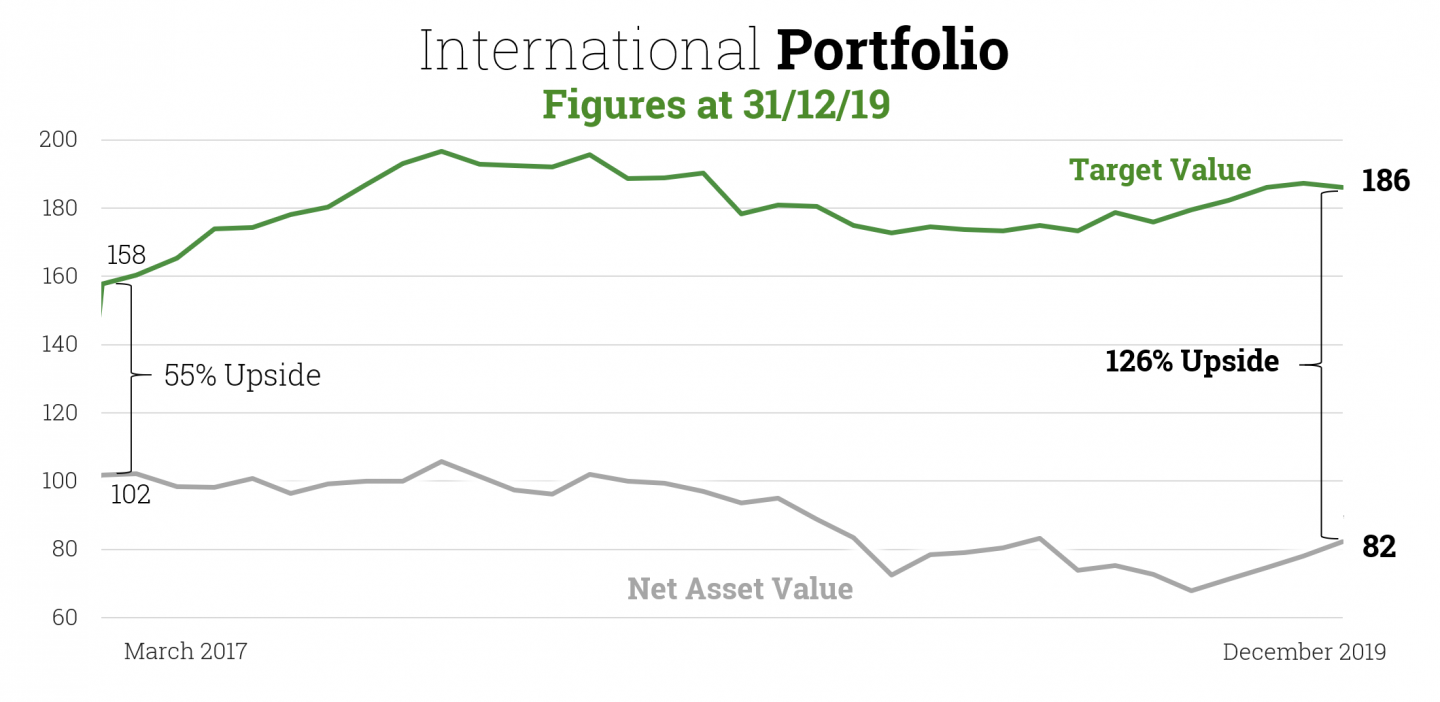
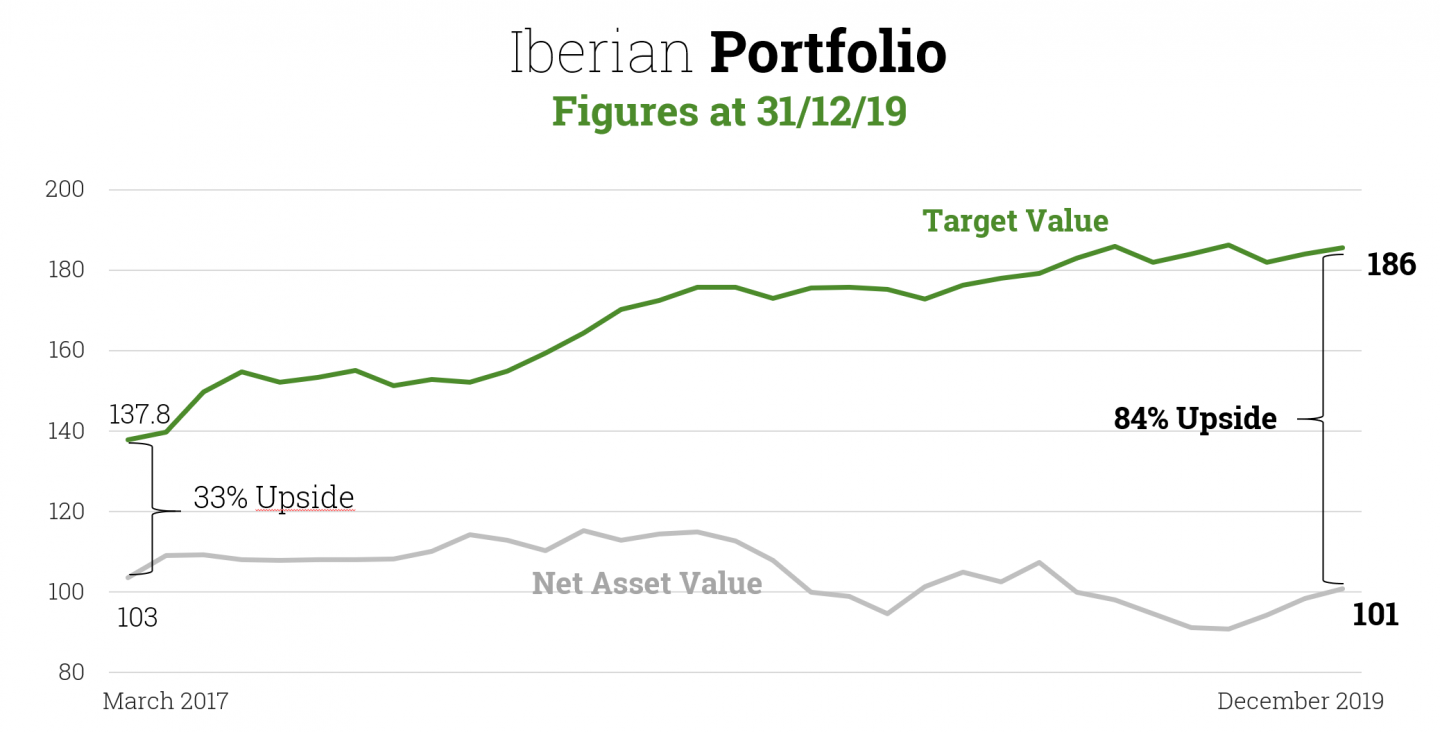
In short, knowing the business in which we invest allows us to have a greater degree of certainty about what may happen in the future. Therefore, being conservative in calculating them, we are convinced with a high degree of certainty, that the target values of our international and Iberian portfolios are perfectly attainable, although we do not know the period in which this will occur.
In these three years, all the people who have invested in Cobas AM funds have been through times that have produced different feelings. Unfortunately, part of the time has been a feeling of unease, since the returns have not been as desired. We have transparently and openly acknowledged the mistakes that have been made. We humbly know that they will not be the last ones, since the usual thing in the world of investment is to be wrong, but the key is to succeed in many more occasions than being wrong. And in the last 25 years we have had valuation errors in more than 45 companies, but we have succeeded and made money in more than 450.
At Cobas Asset Management, we sincerely appreciate the trust that all investors have placed in us. We are proud of the clients that are part of our funds. The alignment of interests between our management team and the investors is a verifiable fact. Their behaviour has made their confidence in our management clear, and of course, the patience and endurance that characterises value investors.
Some may wonder how that trust is measured. Without going into great depth, I will provide some significant data below:
- In a market in which equity funds have undergone redemptions of more than 5.5 billion euros, our fund manager has finished 2019 in a very different position, with just one million euros of net outflows. In fact, if we take into account the management mandates in which Cobas AM participates, the result would be ample net inflows in the year.
- The behaviour of the private investor has been significantly positive, generating more than 20 million euros of net income.
- Nearly 2,500 new investors have placed their trust in Cobas throughout 2019, with the number of participants in our funds increasing to 28,500.
- Of the redemptions made during the year, more than 70% were due to specific liquidity needs or tax reasons, while less than 20% were due to return.
I reiterate on behalf of the entire Cobas AM team: we value the trust you place in us!
At the Investor Relations team we will not get tired of transparently sharing all the information that helps savers to make the best investment decisions, which in our opinion should always be thoughtful and rational. They should never be decisions that come from the irrationality of human behaviour or the market, or from spontaneous emotions, which are known as decisions made in the heat of the moment.
We are very optimistic about the future. We believe that we have a very sound and high-quality investment portfolio, with businesses in which their management and competitive advantages will allow them to continue generating profits. The portfolio profile moves away from index funds and the general evolution of the financial markets; it is mostly a “contrarian” portfolio.
In the past we have already experienced periods in which we benefit from sharp increases in a few months. We do not know when it will happen again, but we are convinced that the market will recognise the value of the businesses we are investing in sooner rather than later.
The following chart shows how in the first quarter of 2003 there was a fall of 16.8%, after several quarters of significant falls of the Bestinver International fund since June 2002, which accumulated a fall of 35% up to March 2003. As can be seen later, very important recoveries occurred in a very short period of time. In just 9 months the fund revalued about 60%.
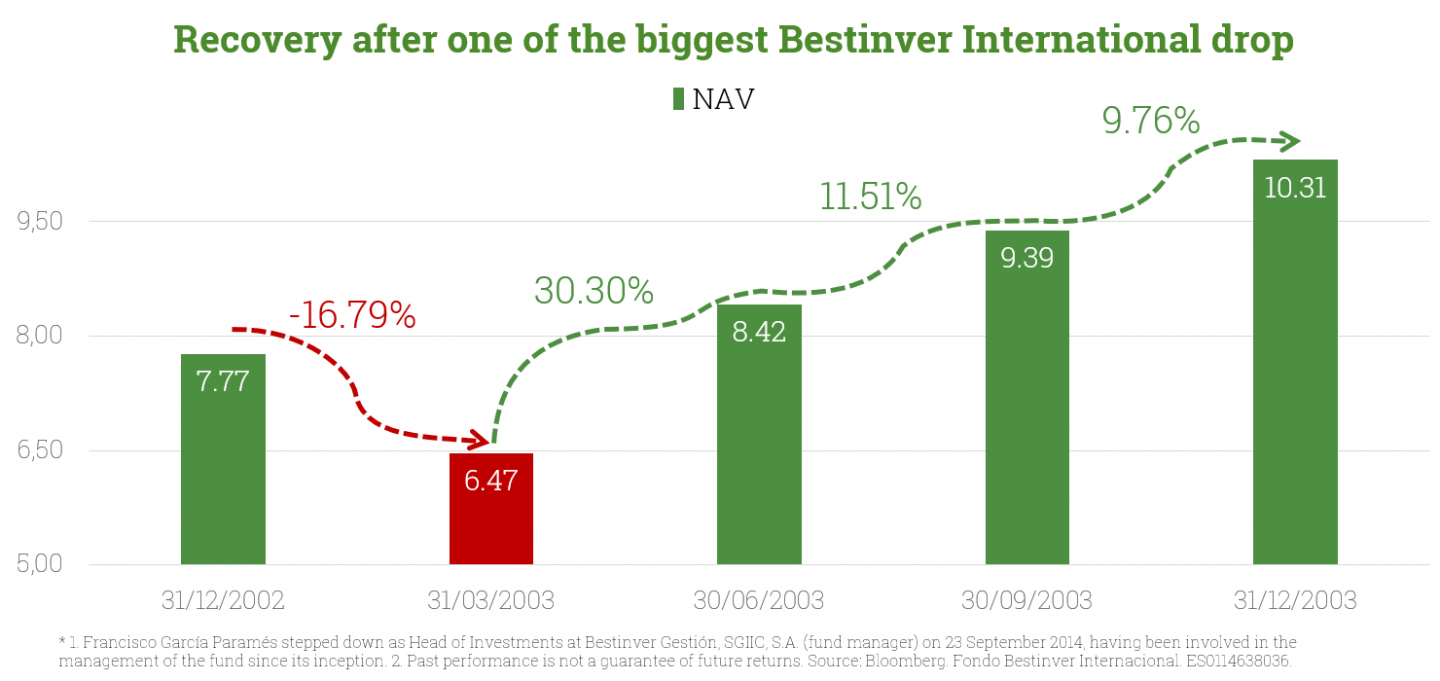
For facts like this, it is very important to avoid market timing since, if we miss the best days of recovery after falls, our returns will be much lower than those of the fund.
To delve into the arguments that make us enthusiastic and optimistic about the future, the Investor Relations team invites you to let us do so by attending or following through video, on the usual channels, our Annual Investor Conferences in Barcelona and Madrid. These shall be held in January and February and the exact dates will be published shortly.
To conclude, I would like to stress once again the main reasons that make us view the future with hope and enthusiasm. The deep knowledge of the companies in which we invest, the trust in our investment philosophy and conviction in our assessments. Sooner rather than later, but without forgetting that these are long-term investments, good results will come. And you know, don’t forget the challenge for 2020, put your money to work!
Did you find this useful?
- |






